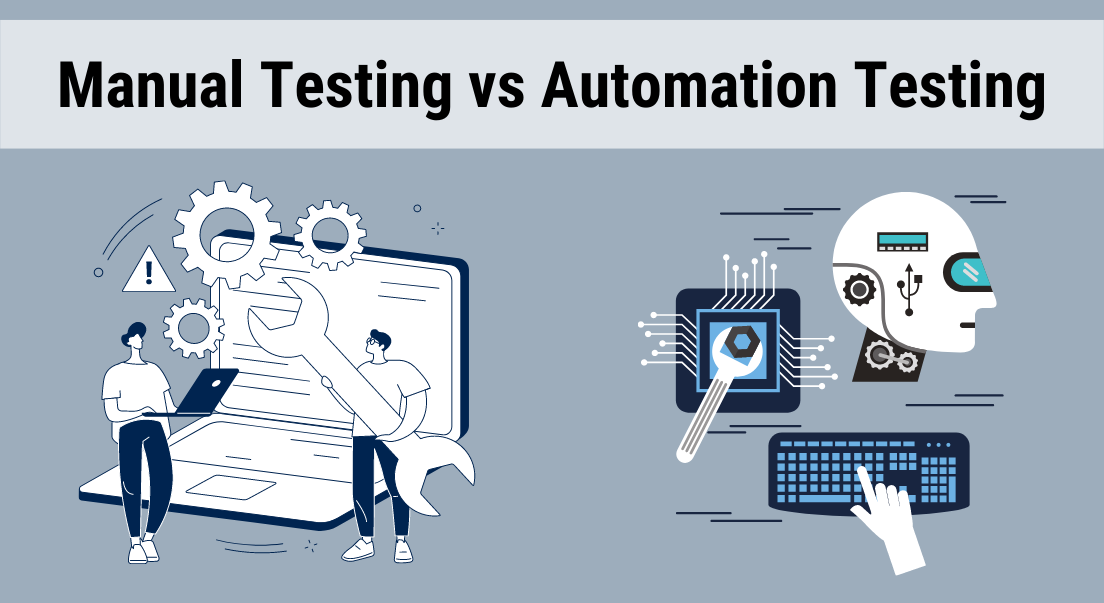From Manual to Automated Testing: A Comprehensive Overview to Transitioning Efficiently and Efficiently
In the world of software program screening, the change from handbook to automated procedures has actually ended up being a significantly crucial shift for organizations looking for to enhance efficiency and precision in their testing methods. The journey from handbook to automated testing is not without its obstacles, but when come close to tactically and with a clear strategy in mind, the benefits can be considerable.
Benefits of Automated Testing
Automated screening uses countless benefits, enhancing performance and accuracy in software advancement processes. Automated examinations can be run all at once on numerous gadgets and operating systems, considerably speeding up the testing stage compared to manual screening.
Furthermore, automated testing guarantees a higher degree of precision in discovering defects. Because automated examinations comply with predefined manuscripts, human error is decreased, resulting in even more reliable examination results. Uniformity in screening is additionally boosted, as automated examinations carry out the exact same actions precisely each time they are run. This uniformity is vital in guaranteeing that all performances of the software are thoroughly examined, reducing the possibility of unnoticed pests slipping via to manufacturing.
Picking the Right Devices

Firstly, evaluate your requirements and goals. Comprehend the scope of your project, the modern technologies entailed, and the ability collection of your team. This evaluation will assist you establish the attributes and abilities you call for in your screening devices.
Secondly, think about the compatibility of the tools with your existing procedures and systems. Seamless integration with your present software development lifecycle is necessary to guarantee a smooth transition to automation.
In addition, assess the scalability and flexibility of the tools. As your screening needs develop, the tools ought to have the ability to adjust and suit adjustments efficiently.
Lastly, consider the support and community around the tools. When carrying out automated testing, durable assistance and an energetic user neighborhood can provide valuable sources and support. By carefully considering these aspects, you can pick the right tools that straighten with your needs and established the stage for an effective shift to automated testing.
Creating Reliable Examination Scripts

When crafting examination manuscripts, it is necessary to take into consideration the certain requirements of the software being checked and make sure that the manuscripts deal with all critical performances. Clear and detailed calling conventions for examination manuscripts and test instances can improve readability and maintainability. Furthermore, including error handling systems within the test scripts can aid in determining and addressing concerns immediately.
In addition, arranging examination scripts into modular components can boost reusability and scalability, minimizing redundancy and boosting performance in examination manuscript upkeep. Normal reviews and updates to examine manuscripts are critical to maintain speed with progressing software application needs and performances. By complying with these principles, testers can create efficient and durable examination scripts that contribute significantly to the success of automated testing processes.
Integrating Automation Into Workflows
By flawlessly incorporating automated testing tools like Selenium or Appium right into the software application development lifecycle, groups can achieve faster responses on code modifications, leading to quicker insect discovery and resolution. This combination allows for constant screening throughout the advancement process, making certain that any problems are identified early on, resulting in higher software program high quality. Proper integration of automation devices calls for cooperation in between advancement, testing, and procedures groups to establish a unified try this site process that maximizes efficiency and efficiency in delivering premium software items.
Making Sure a Smooth Shift
Effectively transitioning to automated testing includes thorough preparation and careful execution to lessen disturbances and make the most of performance in the software program advancement process - automation testing. To ensure a smooth shift, it is vital to begin by performing a thorough analysis of the existing screening processes and determining locations where automation can bring the most substantial advantages. Engaging with all stakeholders at an early stage in the process, consisting of developers, testers, and job managers, is vital for amassing support and buy-in for the automation campaign
Communication is essential during this transition phase. Clear communication of the objectives, advantages, and expectations of automated screening helps to take care of any type of resistance or concerns that may occur. In addition, giving adequate training and sources click this for staff member to upskill in automation devices and strategies is important for making certain an effective transition.
Conclusion
In conclusion, transitioning from manual to automated testing uses various benefits, consisting of increased effectiveness and dependability. By picking the proper devices, creating effective examination manuscripts, and incorporating automation effortlessly right into workflows, organizations can guarantee a effective and smooth change. It is necessary to embrace automation as a valuable possession in software screening procedures to improve general top quality and efficiency.
In the realm of software program screening, the shift from guidebook to automated processes has actually come to be an increasingly vital change for companies seeking to enhance efficiency and precision in their testing practices. Automated tests can be run concurrently on numerous gadgets and running systems, dramatically speeding up the screening phase compared to hand-operated screening. Consistency in testing is also enhanced, as automated examinations implement the very same steps specifically each time they are run.To ensure the effective execution of selected testing tools, the creation of reliable test scripts plays a critical role in verifying the capability and performance of automated procedures - automation testing. By complying with these principles, testers can develop efficient and durable test scripts that add considerably to the success of automated my latest blog post testing procedures